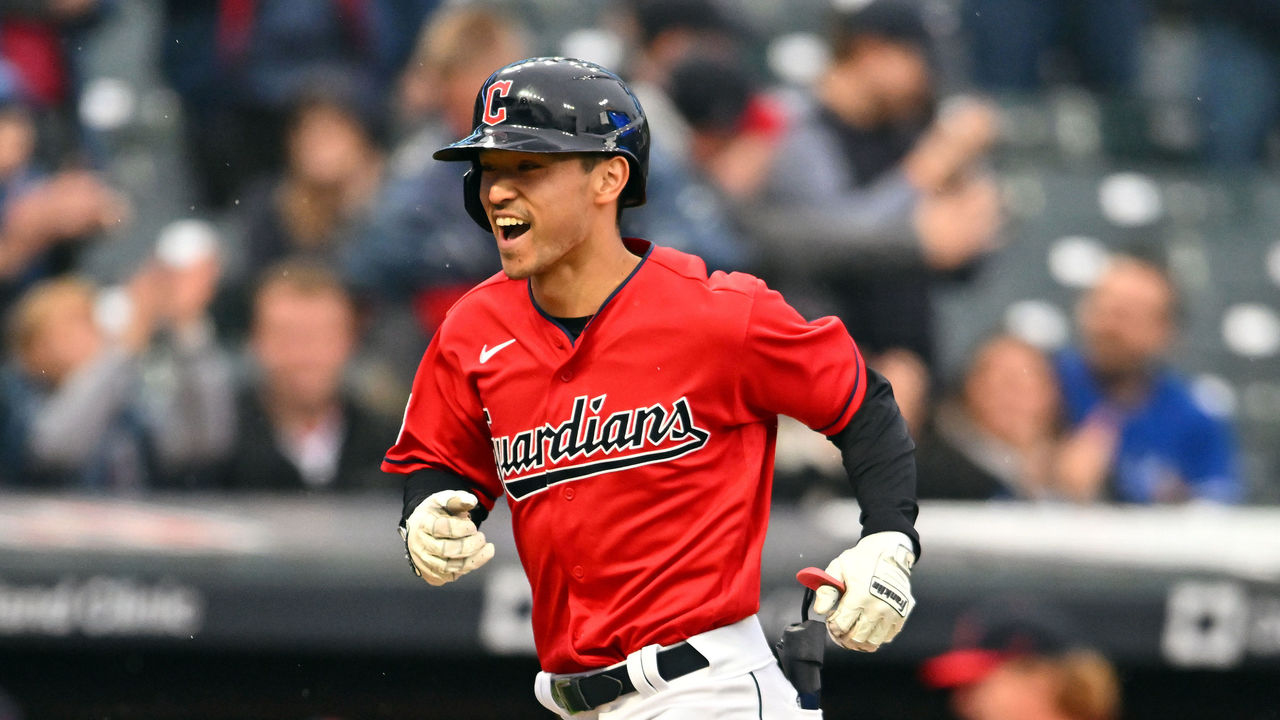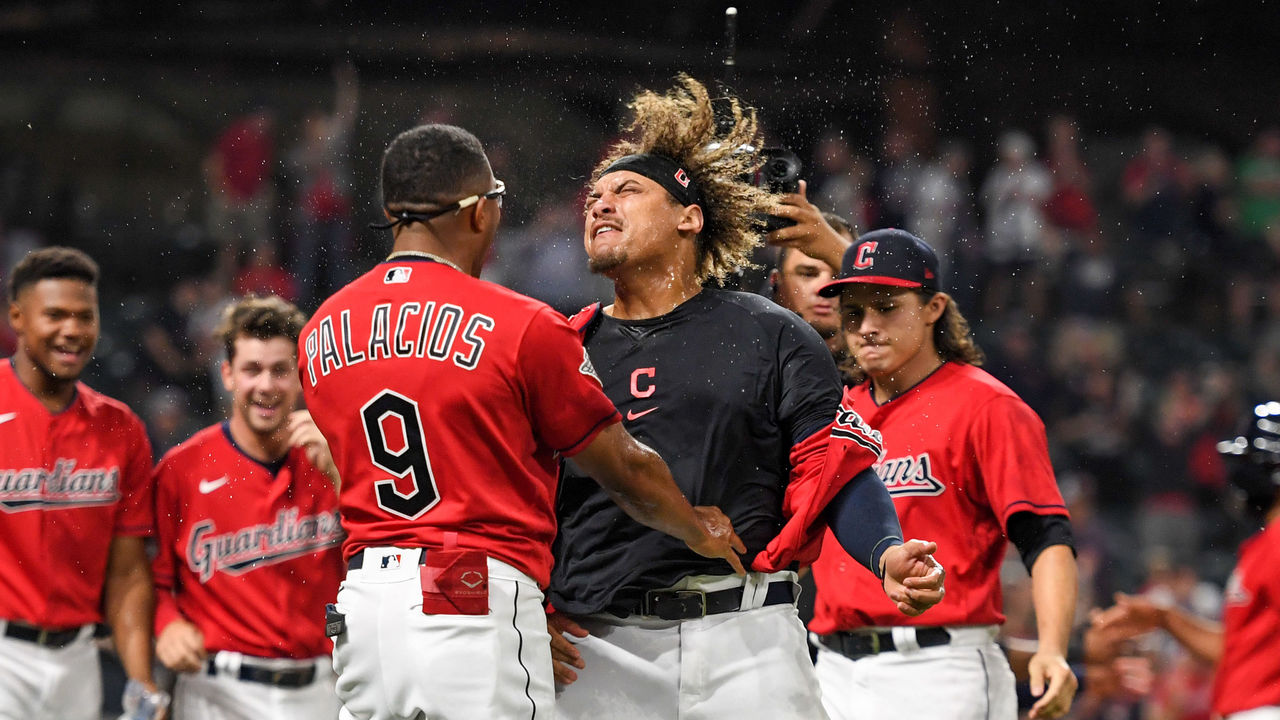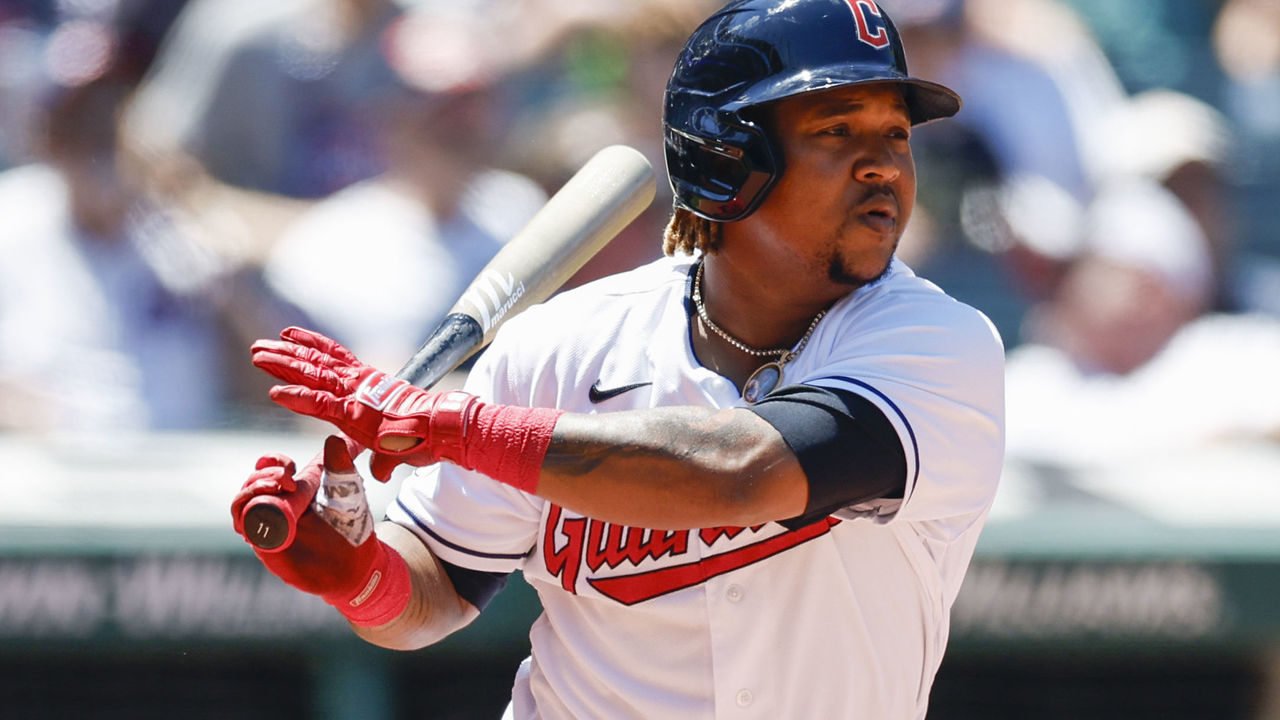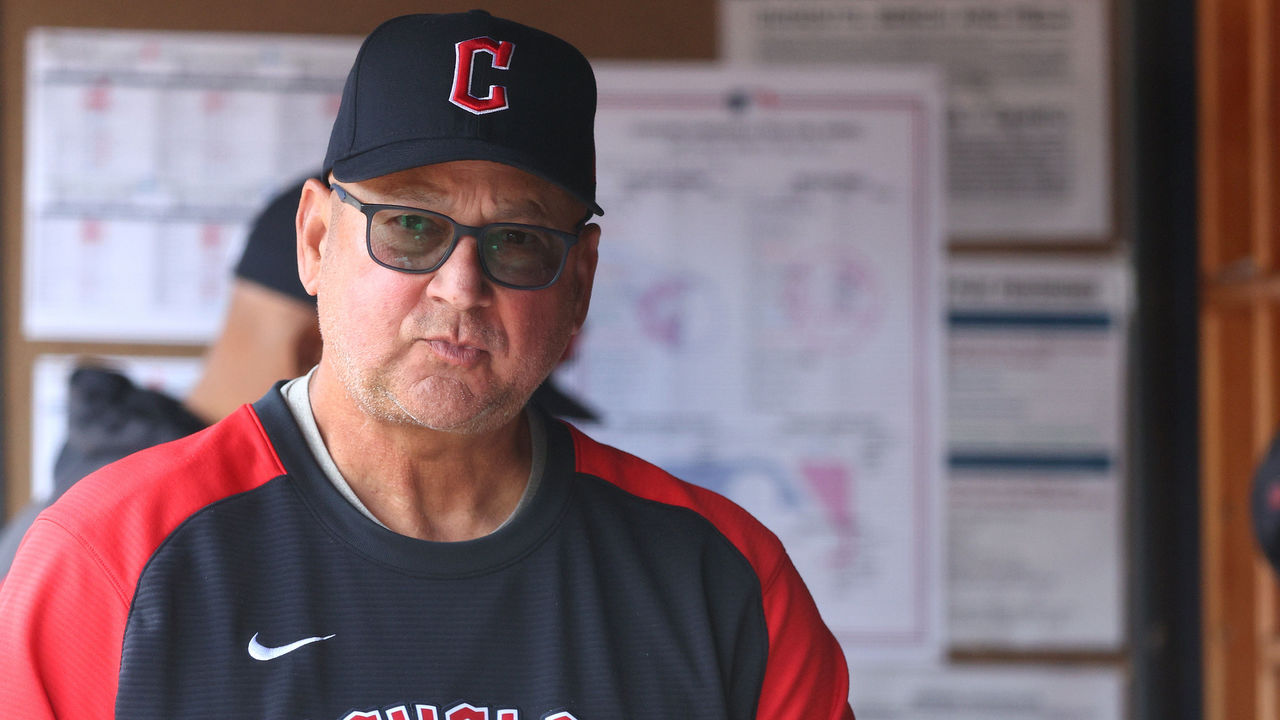How a new approach helped the Guardians arrive ahead of schedule
During the offseason's lengthy lockout, newly hired Cleveland hitting coach Chris Valaika couldn't work with Guardians batters. Club personnel was forbidden from interacting with players.
Without any direct contact, Valaika still tried to learn as much as he could about his hitters and how he ought to teach them. He's part of a new wave of hitting coaches in the majors that incorporates novel training methods and technologies. They're the same kind of developmental practices the club's vice president of hitting, Alex Eckelman, is implementing throughout the Guardians' system.
"After I got hired, I did some homework on the guys. Started talking to Tito (manager Terry Francona), to the front office, about where some of the holes were last year. Different ideas. Tried to capture the big pictures from everybody," Valaika told theScore earlier this summer. "Kinda putting that game plan together.
"What do I see the identity of this team being?"
Valaika understood Cleveland was going to be young. In fact, the Guardians are the majors' youngest team. In a June tweet, the club noted it was also younger than every other Triple-A roster. The average age among Cleveland's position players is 26. Only its two catchers, Austin Hedges and Luke Maile, have reached their 30th birthday. Nine Guardians position players, including five on the current roster, have made their major-league debut this season.

Valaika knew the Guardians were going to be athletic. Of the 15 Cleveland players to qualify this year, 12 are above average in Statcast's sprint speed measure. The Guardians rank third in the majors in stolen bases and are fourth in FanGraphs' all-encompassing base-running metric.
The homework brought Valaika to this conclusion: "It showed we were going to be contact focused," he said.
It's surprising that Cleveland resides alone in first place in the American League Central. But so, too, is how the Guardians are winning. They're playing like a team from another era, and it's helping them arrive ahead of schedule.
In this age of launch angles and other Statcast metrics, the Guardians don't hit for power. They've recorded 94 homers, good for 2.1% of their plate appearances. Only the last-place Detroit Tigers are worse (71, 1.6%). Yet Cleveland has scored 4.38 runs per game, just slightly above the league average of 4.31. The Tigers have registered a league-low 3.17 per contest.
The difference? The Guardians don't swing and miss. Cleveland enjoys the majors' lowest strikeout rate (18.3%), which is down by more than five percentage points from last season (23.5%). That's the largest such improvement in MLB.
Currently, only nine teams in the last nine years have had better strikeout rates. Four of those clubs, the 2017 and 2019 Houston Astros and the 2014 and 2015 Kansas City Royals, advanced to the World Series. And strikeout rates have increased overall since the 2015 Royals and 2017 Astros won it all.

In adjusting for the league strikeout environment, the Guardians are enjoying their best adjusted strikeout rate as a team (83) since 1996, which is 17% better than the MLB team average this season.
Valaika, Eckelman, and other Guardians leaders are fluent in, and comfortable with, teaching modern concepts. However, they've adapted to their players' skill sets and gone another direction.
When spring camp finally opened in Goodyear, Arizona, Valaika spoke to Francona about adopting a team-wide mindset of emphasizing contact and not giving in with two strikes.
"We really made them points to focus on as a group in spring training: two-strike approach and situational hitting," Valaika said. "We work on it during our batting practice, we focus on situational hitting every day. … I know those are buzzwords that get thrown around every year, but I think our guys have really made that part of their identity."
He added: "Just continue to be tough outs. Choking up. Putting balls in play. Forcing pitchers to make pitches. It's part of our work. It hasn't just been cliche eyewash. Guys have bought in. It's important because it's who we are."
Eyewash is a slang term in professional baseball for appearing to work hard but not actually changing anything. Teams and players often talk about their two-strike approach, but the Guardians put in a plan to improve it.
Valaika introduced more game-like practices, which have continued through the season. He also brought high-velocity pitching machines onto the field, something more and more major-league teams have adopted from the minor-league level.
This year, the Guardians are tied for sixth in two-strike batting average (.183), an improvement from 11th (.165) last season. They've increased their overall average by 15 points (.253 from .238).
But the Guardians' plan isn't the only reason for their success. Cleveland developmental officials praise the efforts of the scouting staff. For example, Steven Kwan has been an elite contact hitter since his days at Oregon State. The selections have mimicked the success Guardians scouts had in the 2016 draft when they snagged strike throwers Shane Bieber, Zach Plesac, and Aaron Civale, three-fifths of their current starting rotation.
Cleveland has also done well in recent trades, netting Amed Rosario and breakout star Andres Gimenez from the New York Mets for one year of control over shortstop Francisco Lindor. Hedges, Owen Miller, Josh Naylor, and starting pitcher Cal Quantrill, all contributors to this year's club, came over from San Diego in the 2020 deadline deal for pitcher Mike Clevinger.
Moreover, Jose Ramirez, long one of the better barrel-to-ball hitters in the majors, bought into the plan early this season. Eckelman believes that was crucial for the Guardians.
"You have the perfect model in Jose Ramirez, as far as a competitor, and other established major leaguers. … Those guys set a standard," Eckelman said.

A number of other returnees have shown improvement, which speaks to Cleveland's ability to teach and develop. Of the 76 players who reduced their strikeout rate by at least 3.5 percentage points this season (minimum 100 plate appearances), six are Guardians. And two of those six are key veterans: Rosario and Ramirez.
"I would say it's a combination of factors," Chris Antonetti, the club's president of baseball operations, told theScore of the improved offensive efficiency. "There's certainly an element of player mix that constitutes our major-league roster. And there's also the coaching element, the teaching element … controlling the strike zone, putting the ball in play."
Without adding any significant dollars to their payroll, the Guardians have improved last year's wRC+ by seven points to a league-average 100. Combined with their signature above-average run prevention, it's a formula for winning baseball.
Naylor, enjoying a breakout campaign after suffering a gruesome season-ending injury last year, said he sees continuity in what's communicated and taught throughout the system. He texts with his brother, Bo, a catching prospect now with Cleveland's Triple-A club, and other minor leaguers every day.
"I think we all have the same kind of game plan," Naylor said. "The prospects know the game plan when they get here."
Even though Kwan owns natural bat-to-ball gifts, he said the club's feedback loop helps him hone his skill set.
"I can kinda get away with a lot of stuff; I can hit these jam-shot singles," Kwan said of his hand-eye prowess. "At the end of the day, (the coaching staff) will say, 'Hey, you're chasing out of the zone. You are being a little too aggressive. Let's get back to the barrels. Let's get back to what you're doing well.'"

Rookie outfielder Will Benson cut his strikeout rate from 39% in Triple-A last season to 22% this year, which helped earn him a call-up on Aug. 1.
He studied the Guardians' end-of-season assessment of his strengths and weaknesses, a report card that included charts of his swing decisions and results. It highlighted which parts of the zone and which pitches he excelled against, and where he had to improve.
Benson sought out more game-like batting sessions this offseason: a mix of breaking balls and fastballs, not knowing what pitch type was coming next. He also watched complete at-bats of Barry Bonds and Mike Trout on YouTube. What Benson didn't realize was how rarely they swung. He vowed to become more selective.
Three hours before first pitch Wednesday at a mostly empty Progressive Field, on a sun-soaked yet mild August afternoon, a group of Guardians took turns hitting. They swung inside the half-shell batting cage net that's been a fixture on pregame fields for decades.
The pitches, though, weren't being delivered by coaches at a low speed. They were being spat out from a high-velocity pitching machine situated before the mound. Valaika watched from the back of the cage. The process and focus that was initiated at spring training continued.
"We have to string three hits together. We have to run the bases hard. We make contact. We get into bullpens. I think that's been our rallying cry from spring training," Valaika said earlier this summer. "That's the identity this team took on, and we've really embraced it."
Although these are old-school ideas, they're being perfected in a new-school way, allowing the Guardians to arrive ahead of schedule.
Travis Sawchik is theScore's senior baseball writer.